Overview
If you're serious about off-roading, you already know that the terrain sets the rules—not your build. Mud, rocks, sand, and snow each introduce different stress points that can break your rig, strand you mid-trail, or turn a good trip into a recovery nightmare. That's why smart drivers don’t just modify—they build with intent.
This guide walks you through what it actually takes to prepare a 4 wheel drive off road vehicle for real-world trail diversity. You’ll learn the universal off road mods every rig needs before hitting any terrain, then dig into the upgrades that matter most for mud, rocks, sand, and snow. We'll close with strategic insights to help you stay in control, minimize trail-side failures, and enjoy the adventure ahead with confidence.
Table of Contents
- Why One 4 Wheel Drive Off road Setup Isn’t Enough
- Universal Off road Mods Every Rig Needs First
- Terrain-Specific Off road Gear That Actually Makes a Difference
- Driving Style Matters More Than The Best Offroading Trucks
Why One 4 Wheel Drive Off road Setup Isn’t Enough
How Terrain-Specific Stress Wrecks Your Rig
Here’s the hard truth: off-roading isn’t just about traction—it’s about how and where your rig takes damage.
In deep mud, traction loss is just the beginning. Mud can drag on your suspension, bury your shackles, and clog your drivetrain. If your clearance is too low, even a gentle dip becomes a full stop.
Rocks are relentless. They’ll punish your undercarriage—fuel tank, transfer case, exhaust mounts—any weak spot they can reach. Without a proper skid plate Jeep or Toyota-compatible armor, one bad hit can put your trip (and your rig) on pause.
Sand saps power. You’ll need lower tire pressure, steady throttle, and cooling systems that can handle constant strain. Run dunes in the heat without a compressor or a dual battery kit, and you’ll feel it—fast.
Snow creates a false sense of softness. Beneath the powder, you’ve got crust, ruts, and icy layers that jam up fenders and steal grip. If you’re not set up to drive in deep snow, it doesn’t take much for your tires to lose their bite.
Each terrain stresses a different system — clearance, cooling, steering, electrical, or recovery — and no single setup can cheat physics.

Universal Off Road Mods Every Rig Needs First
Not every trail throws the same punches. But some upgrades are non-negotiable—no matter where you're heading. The best off-road rigs don’t just survive trails—they’re built to adapt.
And adaptation doesn’t mean packing every upgrade ever made. It means starting with a smart baseline—parts that perform in every terrain, that solve more than one problem, and that add strength where it matters most. These are the off road mods every rig should have dialed in before you even choose a trail.
Let’s break them down.
Jeep Skid Plates — Undercarriage Armor That Saves You Thousands
Trail damage rarely comes from what you see—it’s the stump, the boulder, the rut hiding under water or snowpack that hits hardest. Without solid protection, even one impact can shear off a transmission pan or crack your oil system. And factory plates? They're thin, partial, and often skip the most vulnerable points.
The most critical skid plate jeep upgrades are those that protect your drivetrain and midsection. Start with a mid-transmission plate, which guards your transfer case and crossmember—these are damage magnets when descending rocky ledges or crawling over fallen logs. Follow with fuel tank and engine skid plates, especially if you're heading into granite or sharp shale fields. Your differentials and steering components aren’t invincible either, and a front skid plate can be the difference between steering home or hiking out.
Explore Mountain Offroad’s full line of armor like jeep skid plates — engineered for real trail impacts, not showroom floor aesthetics.
Jeep Wrangler TJ Body Lift — Clearance That Matters on Every Trail
It’s not just about squeezing in larger tires. A well-designed body lift jeep gives you vertical space where it counts—between your undercarriage and the terrain. That’s especially critical for rigs running moderate suspension setups that still want articulation without risking contact.
But here’s the trick most folks miss: not all body lifts are created equal. Cheap spacers can warp, creak, or compromise bolt alignment after a few rough trail days. Mountain Offroad’s Jeep Wrangler Body Lift kits are designed with powder-coated steel components, exact-fit brackets, and corrosion-resistant hardware that won’t back down after a muddy washout or a 500-mile overland loop.
They also play well with factory systems—meaning no weird exhaust re-routes or throttle cable drama.
ARB Twin Compressor + Mounts — If You’re Not Controlling Your PSI, the Trail Is Controlling You
Every terrain has a pressure sweet spot. Sand wants low PSI to maximize surface area. Rocks want just enough give to keep traction without sidewall damage. Snow needs flexibility to float, while mud… well, mud wants whatever keeps you from sinking.
That’s where a reliable arb twin air compressor shines—especially when paired with a stable mount that prevents heat buildup during repeated use.
Here’s a common failure: drivers air down for dunes, then forget how hot compressors can get trying to reinflate in 100°F sun. Without proper mounting, airflow and motor cooling suffer. An ARB air compressor with a heat-dissipating mount prevents burnouts, powers your lockers, and handles tools—all from the same reliable source.
Check out our ARB Compressor Mounts to keep your trail pressure dialed in no matter the terrain.
Dual Battery Kit — Power for Everything That Matters
One dead battery on the trail can ruin your day—or your whole trip. Winches, fridges, lights, radios… they all drain juice fast. That’s why dual batteries are a must-have for anyone running serious overland accessories or recovery systems.
Mountain Offroad Dual Battery Tray doesn't just give you space for a second battery—it secures both safely, side-by-side in your stock location, with no drilling required. The updated design includes a solid tie-down plate, built for high-vibration environments and rollovers. We make sure your mounting system can take a beating and hold its place no matter what trail you’re on.
Whether you're running a fridge, overland gear, air lockers, or heated seats—having a dual setup is how you keep moving forward.
Steering Box Brace + Toyota & Jeep Steering Components — Control Starts with the Front End
Your suspension might flex and twist all day, but your steering system? It needs to hold true under pressure. Especially on shelf roads, rock gardens, or when dragging through deep ruts.
A steering box brace reinforces your most vulnerable point—the box itself. It's the pivot that translates your input into movement, and under repeated stress, even minor flex can ruin responsiveness or worse—strip your sector shaft. Combine that brace with stronger jeep steering components (like HD drag links and tie rods), and you’ll feel the difference instantly: tighter turns, better road feel, and longer lifespan on everything from the pitman arm to the knuckles.
Explore our precision-engineered steering braces to keep your front end tracking like it should—on- or off-road.
Bonus: Trail Essentials That Don’t Come in a Box
The upgrades above give your rig the muscle to tackle real terrain—but strength alone won’t save you when you’re axle-deep in mud or staring down a steep, icy hill.
Real trail readiness means anticipating what goes wrong. That’s where trail essentials come in—not just as gear, but as backup systems and contingency plans you can count on.
Start with traction recovery. You’ll want a pair of high-grip recovery boards mounted within arm’s reach. Whether you’re spinning tires in snow, sand, or wet clay, recovery boards are faster and safer than most jacks or winches—especially when you’re solo.
Then, upgrade your recovery system. Forget gimmicks. Your offroad recovery gear should include a kinetic recovery rope rated at 1.5x your rig’s weight, soft shackles with abrasion guards, and a snatch block if you run a winch. Skipping this step means hoping a stranger with the right tools drives by. Good luck with that.
Next: tire prep. No off road recovery equipmen works if your tires are underperforming. In snowy areas, all terrain vs snow tires is more than a Reddit debate—it’s the difference between control and chaos. And if you’re headed for mud season in the South or deep sand in the Southwest, don’t trust your stock treads. Know when to switch to mud terrain tires vs all terrain tires and how PSI affects traction.
And finally, don’t assume you’re good to go just because you bought a lift and new tires. Many street legal off road vehicles still require permits for access to national forests, BLM lands, and certain desert regions. Check your region’s rules and bring printed versions—cell service is a coin toss out here.
Want a deeper dive into what really makes or breaks your first build? Explore this field-tested list of commandments from seasoned builders on Expedition Portal and this full upgrade priority breakdown from OnX.

Terrain-Specific Off road Gear That Actually Makes a Difference
Jeep Shackles for Mud — Grip Alone Isn’t Enough
In deep mud, traction disappears fast—recovery gear brings you home. Jeep shackles are a non-negotiable. Mount them front and rear, and make sure they’re rated far above your rig’s weight. Recovery doesn’t always go in reverse.
That’s just the start. The universal upgrades we covered earlier—skid plate jeep, dual battery kit, and arb twin compressor—are still critical. Hidden rocks under mud can tear out your oil pan. Low voltage can stall your winch. A good arb air compressor lets you drop PSI before entry and reinflate when the job’s done.
Don’t overlook backup tools: recovery boards mounted outside the cabin save precious minutes. Kinetic ropes work better than static ones in slippery conditions, and if you go out solo, a winch isn’t optional—it’s insurance.
As for tires? If you’re deciding between mud terrain tires vs all terrain tires, mud tires self-clean better—but only with the right technique. Air down to 15–18 PSI for maximum footprint, especially if you’re loaded with gear.
Pro tip: Always rinse your shackles and recovery gear after a muddy run—dried grit can seize pins and weaken straps before your next ride.

Shock Mounts for Rocks — Reinforce the Points That Get Hit First
Rock crawling stresses your suspension more than any other terrain. And factory shock mounts? They’re often the first to bend or snap. Reinforced mounts keep your shocks stable under extreme compression and sudden drop-offs, preventing misalignment or failure mid-trail.
These mounts are especially critical if you’ve upgraded your control arms or changed ride height—they help preserve proper geometry and ensure your suspension can flex without risk. Combine them with Jeep skid plates to protect your undercarriage and a steering box brace to maintain precise control when tires are wedged at odd angles.
And remember: this section adds to your core gear—not replaces it. Dual battery kits, solid body armor, and recovery equipment still matter here.
Want a shortcut to lessons others have paid for in broken parts? Read through this Reddit breakdown on proper off-road mod progression—you’ll thank yourself later.
Pro Tip: If you’re charging rocks like a hill climb, you’re doing it wrong—slow, steady throttle keeps your rig safe and your steering alive.
ARB Compressor Mount for Sand — Heat Kills More Than Traction
If you’re not controlling your PSI, the trail is controlling you.
In sand, that means airing down to 12–14 PSI for traction, then airing back up fast before pavement. Without a solid arb compressor mount, your arb twin compressor risks overheating—especially in hot, low-airflow conditions.
Mounting matters more in sand than people think. A secured, ventilated setup keeps your system running when engine temps are already pushing limits.
Still need the basics: skid plate jeep to block buried rocks, body armor jeep for ridge protection, and a dual battery kit to power gear without draining essentials.
Want better control? Use preset tire deflators, and consider beadlocks if you frequently run low PSI.
Pro tip: Never stop uphill on sand. Always stop on a downslope if possible—and carry a tarp or traction mat for emergency takeoff if you get high-centered.
Aftermarket Fenders for Jeep in Snow — Where Clearance Saves the Day
Deep snow doesn’t just test traction — it tests your rig’s clearance. Without enough space in your wheel wells, snow builds up fast, turning your tires into ice-packed anchors. Aftermarket fenders for Jeep create critical clearance, letting tires shed snow instead of trapping it.
Just like in other terrains, don’t skip the essentials. A good skid plate jeep shields vulnerable parts from frozen debris, and a dual battery kit keeps your systems running when cold weather drains your main power.
As for tires? If you’re choosing between all terrain vs snow tires, snow tires win in icy, compact conditions. They stay pliable, grip better, and keep you moving where others slide out.
Pro tip: Before climbing a snowy hill, knock snow from your wheel wells. Built-up ice can jam your steering or rip off liners mid-turn.

Core Advanced Driving Techniques to Master Across All Conditions
Upgrades give you the right tools — but it’s how you use them that defines the outcome. From icy climbs to soft sand, even the best mods fall short without the right technique. Once your rig is ready, the next step is refining how you drive it. We’ve broken down the five off-road driving techniques for beginners and experienced drivers alike — check them out to complete your trail-readiness.
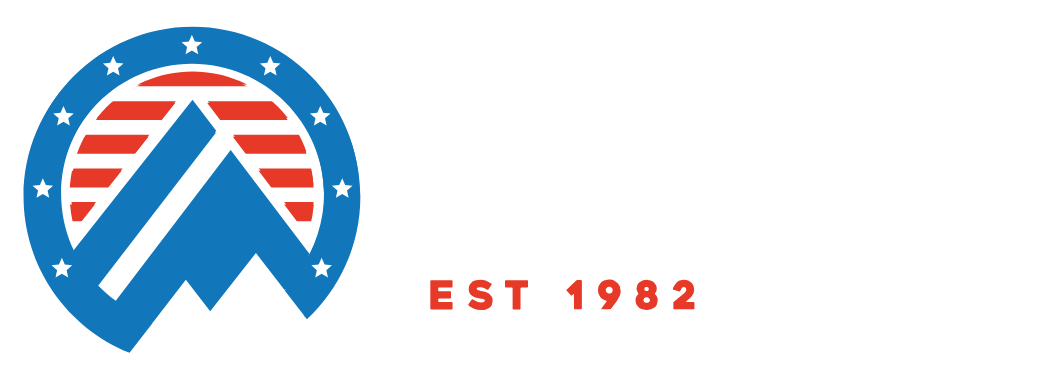
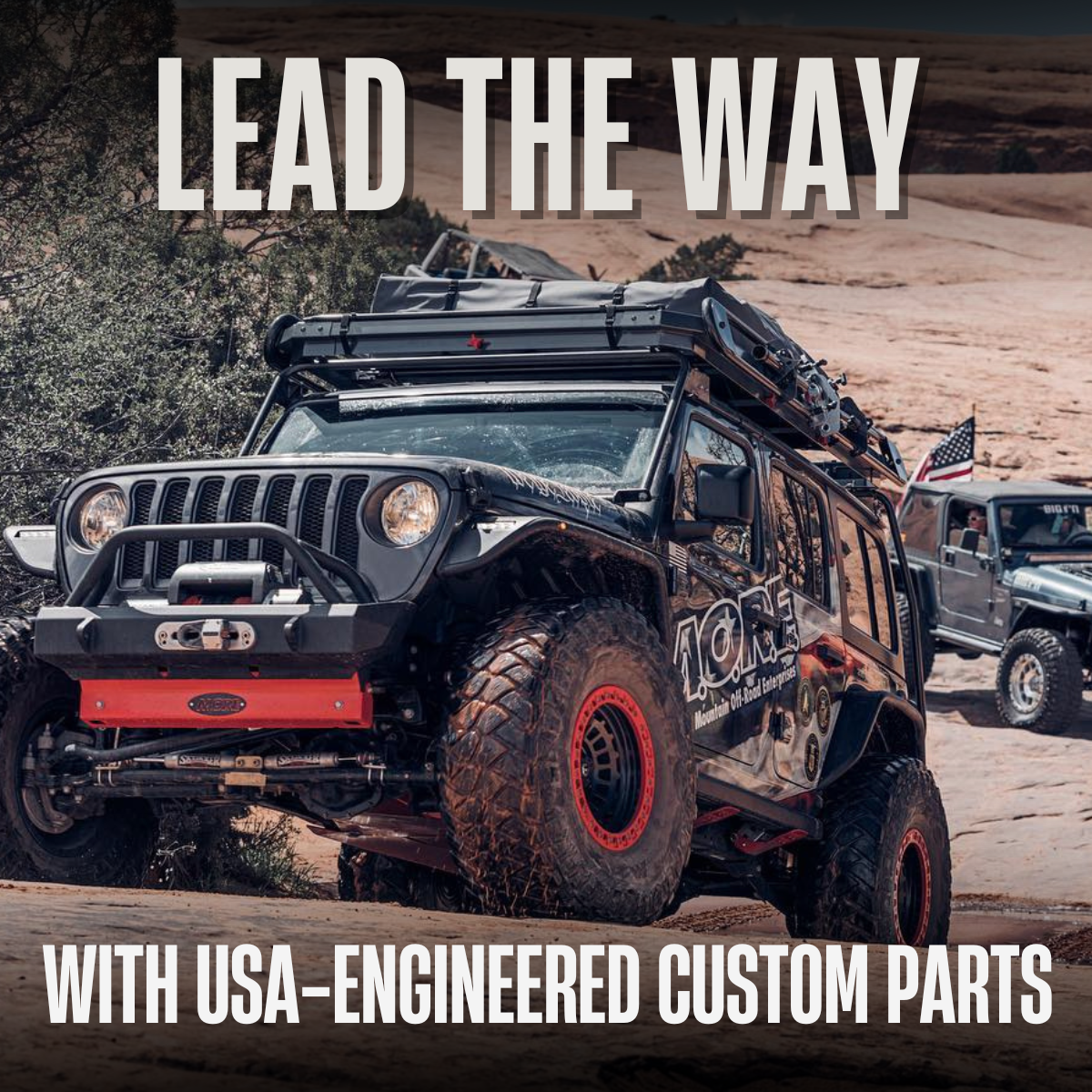
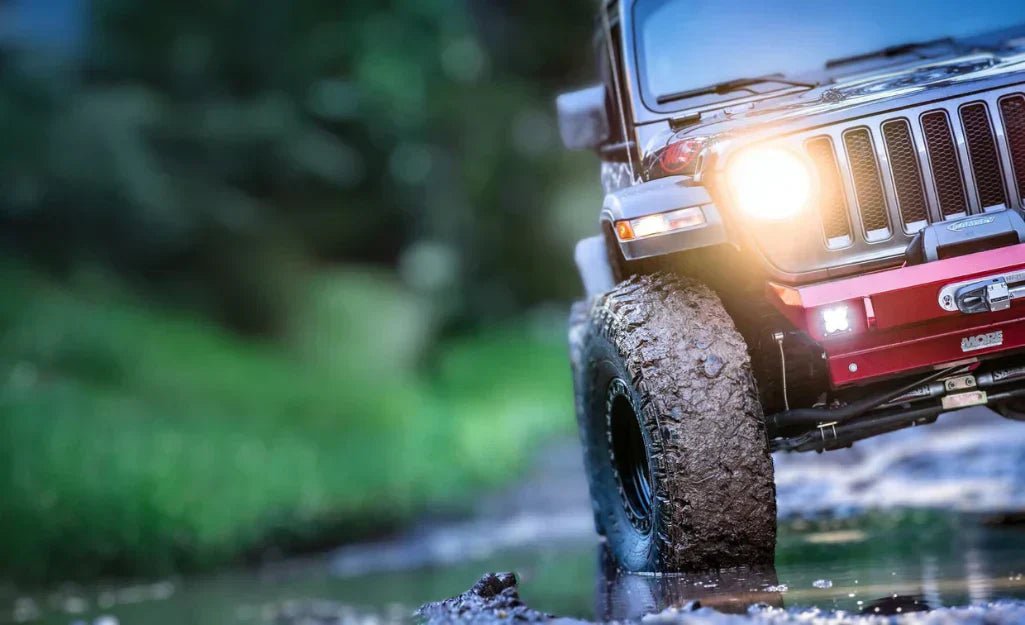
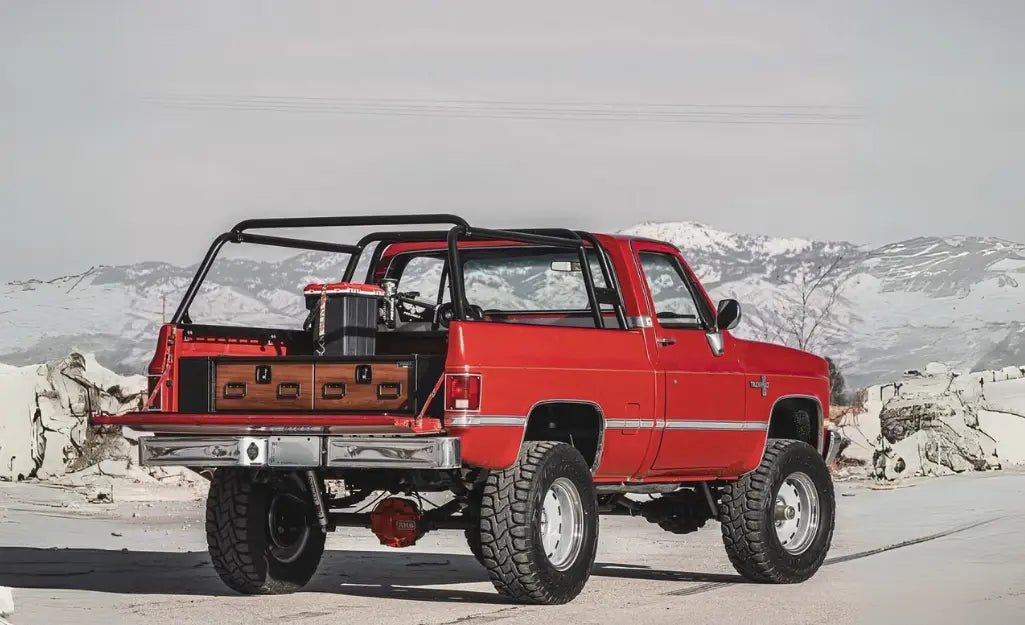
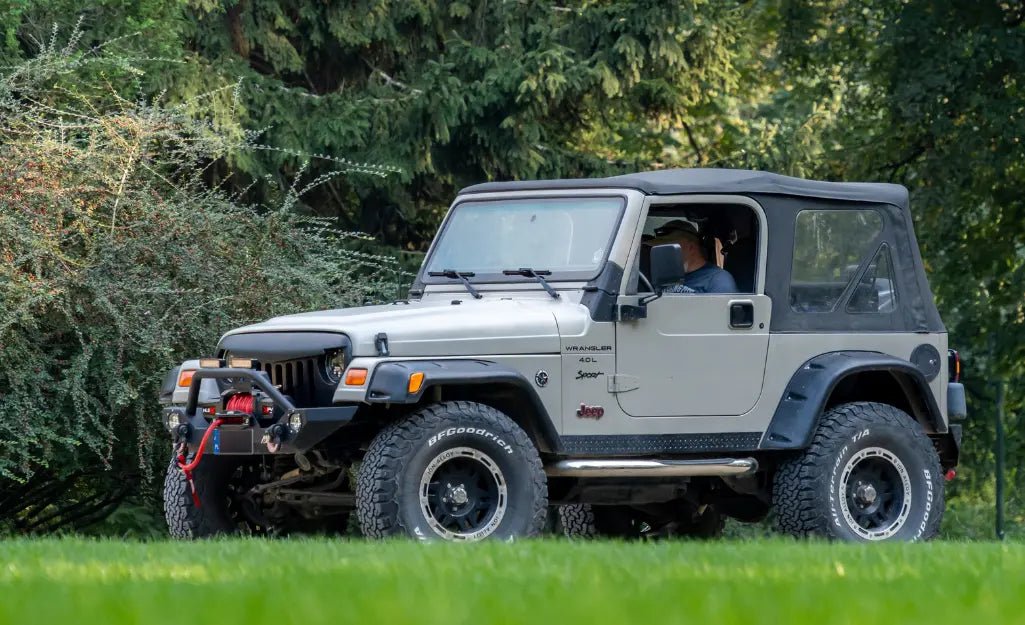
Leave a comment
This site is protected by hCaptcha and the hCaptcha Privacy Policy and Terms of Service apply.